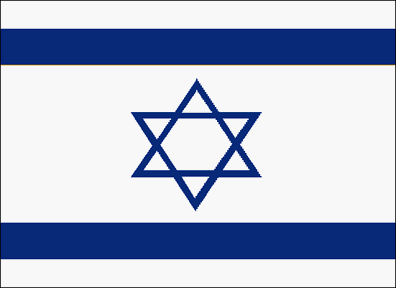



Army
 The Israeli government does not disclose information on the overall size of the IDF, or the identity, location, and strength of units. In 1988 the International Institute for Strategic Studies in London estimated the strength of the ground forces at 104,000 troops, including 16,000 career soldiers and 88,000 conscripts. An additional 494,000 men and women were regularly trained reserves who could be mobilized within seventy-two hours. As of 1999 Jane's estimated the active duty strength at 136,000 troops.
The Israeli government does not disclose information on the overall size of the IDF, or the identity, location, and strength of units. In 1988 the International Institute for Strategic Studies in London estimated the strength of the ground forces at 104,000 troops, including 16,000 career soldiers and 88,000 conscripts. An additional 494,000 men and women were regularly trained reserves who could be mobilized within seventy-two hours. As of 1999 Jane's estimated the active duty strength at 136,000 troops.
The staffs of each of the ground forces' three area commanders were divided into branches responsible for manpower, operations, training, and supply. The authority of the area commanders extended to the combat units and ground force bases and installations located within their districts, as well as area defense, including the protection of villages, especially those near the frontier. During combat, area commanders also coordinated activities of naval and air force units operating on fronts within their areas.
The army is organized into three armored divisions, each composed of two armored and one artillery brigade, plus one armored and one mechanized infantry brigade upon mobilization. An additional four independent mechanized infantry brigades are available. The reserves consist of nine armored divisions, one airmobile mechanized division, and ten regional infantry brigades for border defense. In practice, unit composition is extremely fluid and it was common for subunits to be transferred, especially when a particular battalion or brigade was needed in a combat zone far from its regular divisional station.
The IDF did not organize permanent divisions until after the June 1967 War. As of 1988, their composition remained flexible, leading military analysts to regard the brigade as the basic combat unit of the IDF. Brigade commanders exercised considerable autonomy, particularly during battle, following the IDF axiom that the command echelon must serve the assault echelon.
Between 1977 and 1987, the IDF reconfigured its units as its tank inventory grew, reducing the number of infantry brigades while increasing the number of armored brigades from twenty to thirty-three upon mobilization. Although maintained with a full complement of equipment, most of the armored brigades were only at cadre strength.
The Israeli ground forces are highly mechanized. Their equipment inventory included nearly 4,000 tanks and nearly 11,000 other armored vehicles. Their armored personnel vehicles almost equaled in number those of the combined armies of Egypt, Jordan, and Syria. The offensive profile of the army was bolstered significantly by the artillery forces (principally self-propelled and equipped with advanced fire control systems and high-performance munitions). Antitank capabilities had been upgraded with modern rocket launchers and guided missile systems.
As of 1988, most Israeli ground forces were positioned on the northern and eastern border areas facing Jordan, Syria, and Lebanon. After the Syrian army shifted most of its troops out of Lebanon following the IDF withdrawal in June 1985, more than six Syrian divisions were concentrated in the Golan-Damascus area. The IDF responded by constructing several defensive lines of mines and antitank obstacles in the Golan Heights, and by reinforcing its troop strength there, mainly with regular armored and infantry units. Reserve units training in the vicinity also could be mobilized in case of need. Other ground forces were deployed in defending the Lebanese border against infiltration.
Sources and Resources
http://www.fas.org/nuke/guide/israel/agency/army.htm
Maintained by Webmaster
Updated Wednesday, May 24, 2000 12:15:01 PM






 The Israeli government does not disclose information on the overall size of the IDF, or the identity, location, and strength of units. In 1988 the International Institute for Strategic Studies in London estimated the strength of the ground forces at 104,000 troops, including 16,000 career soldiers and 88,000 conscripts. An additional 494,000 men and women were regularly trained reserves who could be mobilized within seventy-two hours. As of 1999 Jane's estimated the active duty strength at 136,000 troops.
The Israeli government does not disclose information on the overall size of the IDF, or the identity, location, and strength of units. In 1988 the International Institute for Strategic Studies in London estimated the strength of the ground forces at 104,000 troops, including 16,000 career soldiers and 88,000 conscripts. An additional 494,000 men and women were regularly trained reserves who could be mobilized within seventy-two hours. As of 1999 Jane's estimated the active duty strength at 136,000 troops.
